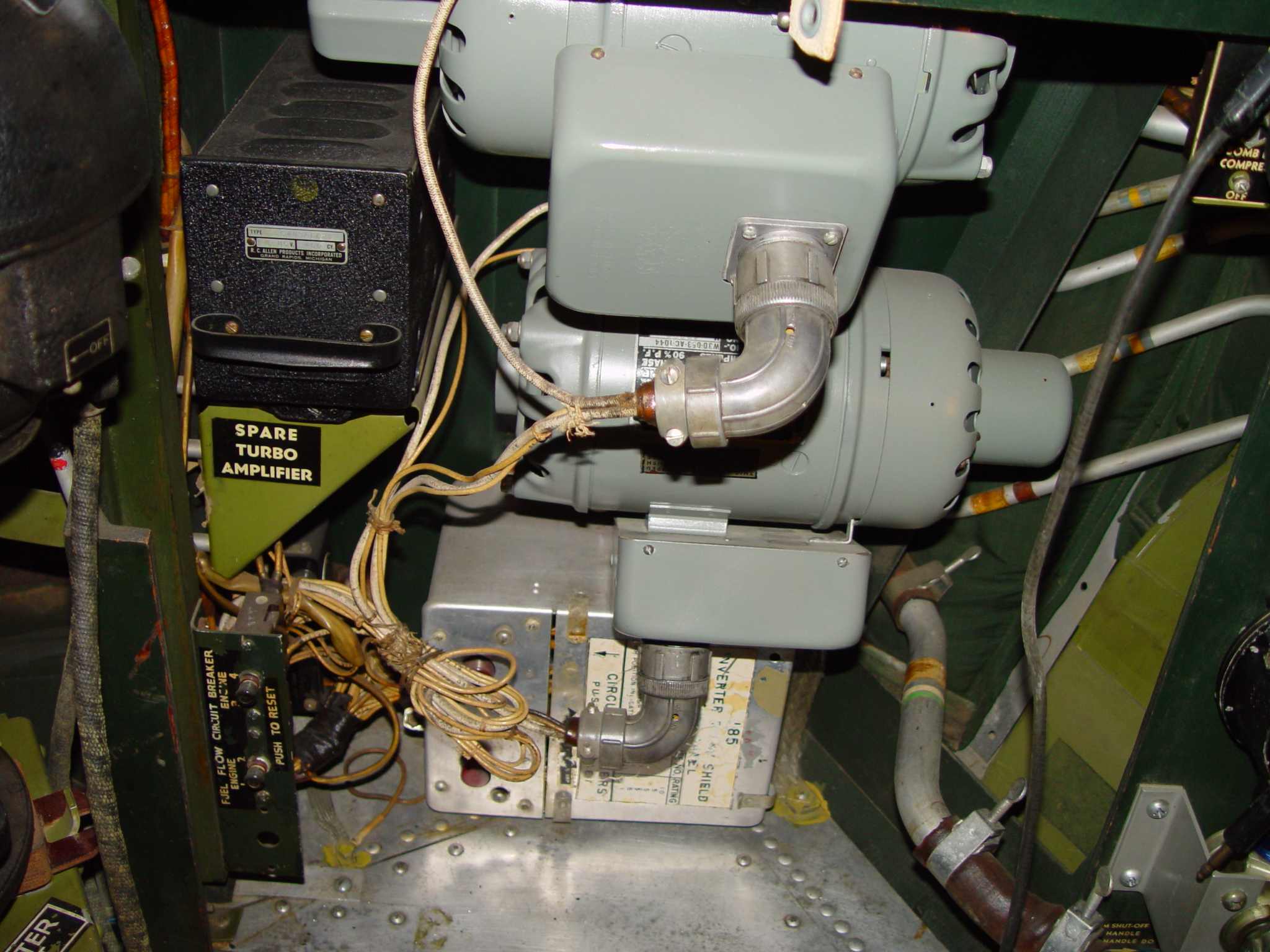Navigator's Position
 Navigator's position looking forward
Navigator's position looking forward
 Navigator's position looking toward the rear. Notice the plywood side mount for the APN-9 LORAN indicator
Navigator's position looking toward the rear. Notice the plywood side mount for the APN-9 LORAN indicator
The navigator arguably possessed the greatest array of technology available to any
aicraft crew member in WWII. Not only did he have that most ancient of instruments, the bubble sextant,
but he also had the following:
- an Astro Compass, a derivative of the sun compass, a fixture mounted device used to
obtain a rapid check on the true heading being flown. This did not replace the sextant, but did provide a
check on the magnetic compass. Especially in far northern flights, the magnetic compass could be off by
several degrees.
- a sophisticated magnetic compass called a gyro-stabilized flux gate compass. This had
a sensitive magnetic field detector mounted in the wingtip to remove it from stray fields, and provided an
extremely accurate indication of magnetic north, regardless of flight attitude. It could also be connected to
the automatic pilot to fly a steady course.
- a drift meter to estimate sideways movement due to wind currents aloft.

Stabilized drift meter
- a radar repeater to view ground topology through any kind of weather.
- a radio range indicator to alert him to passing over navigation control points on established
radio navigation pathways (this was also tied to lights on the pilot and copilot instrument panels.)
- Automatic Direction Finder - a radio set with an automatically steered loop antenna,
indicating the direction to a navigation beacon - or even a broadcast station when needed.
- a LORAN-A (LOng RAnge Navigation, band A) Indicator - a sort of 'first generation'
Global Positioning System, but which used shore based transmitting stations rather than satellites. A low
frequency variation (LORAN-C) is still in use.

Loran navigation scope
...and of course the usual aircraft instruments, plotting instruments, and charts to make sense of all the data
provided by these other instruments. There was good reason for the multiplicity of instruments.
Many aircrews were lost, especially over the vast reaches of the Pacific, because of faulty
navigtion. Famous examples like Lady Be Good, lost in the Lybian desert, made a variety
of equipment for cross checking essential for the time.
Other equipment was also installed around the navigator's position, sometimes simply because there
was room. The inverters below are typical of that "stashing."

500 watt 115 volt 400 Hertz AC inverters for avionics equipment
Mounted on the bulkhead beneath the LORAN indicator, these two MG-149 inverters converted 28 volts DC to 115 volts
AC at 400 Hz for a variety of communication, navigation, and control needs. This approach was somewhat
different from US Navy aircraft practice during much of the war, which relied on generators driven directly
by the main engines.




